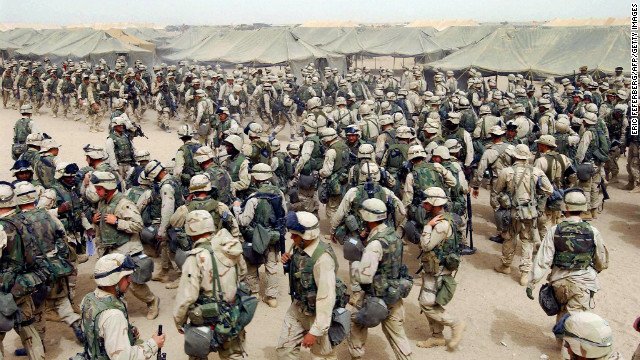
TEST
Prelude to The War: The Middle Eastern Oil Crisis – Part 1
Humans can be so irrational sometimes. They overreact to things and then can’t handle the consequences of their actions. I am intrigued in that they can have such small, uncalculating minds sometimes, yet they are also capable of so much in terms of creativity—though often they are only trying to find creative ways to destroy one another. A fascinating species, to say the least. Take, for example, one of the pivotal events in the collapse leading to World War III.
In a delayed response to a series of terror strikes on 11 September 2001, United States President George W. Bush ordered the military to attack a foreign power in early 2003. The pretext was that Iraq, led by despot Saddam Hussein, had weapons of mass destruction (WMDs)—in particular, those of a nuclear nature.
Around the world, millions of people protested the impending war, stating that Iraq had no large-scale weapons. Still, the United States and several coalition allies moved forward with their strike plans, amassing troops and supplies in Kuwait. Of course, the President clearly didn’t believe that Iraq posed any serious threat, or he would have ordered a different approach in the attack.
On 19 March 2003, the United States opened hostilities with a tactical airstrike against the presidential palace in Baghdad.
On 20 March 2003, Iraq stunned the world by detonating a tactical nuclear device—the first of several—to wipe out the coalition forces as they crossed the border into Iraq. Two hours later, several more nuclear devices were detonated across Kuwait, targeting coalition bases and supply camps. The next series of targets were major oil-production fields and facilities, igniting wells across the small nation. By the time the sun set, the coalition forces had suffered losses estimated over 200,000 troops and support personnel; much of Kuwait was burning; and the United States had released the Go-Codes for the counterstrike.
The Iraqi morning of 21 March 2003 dawned over a desolate, irradiated, burning landscape. Every city or town with even a trace of military significance had been vaporized by a rain of nuclear warheads. The people who survived the initial wave of the counterstrike soon fell victim to radiation poisoning. The country ceased to exist in a thermonuclear rain of death.

- The nuclear bombs and resulting firestorms ignited oil wells across the Middle East.
The world just watched in stunned silence. Public outcry against the war evaporated—President Bush had proven that Iraq did have WMDs—but no one could decide whether the United States had taken the right action in matching Iraq’s escalation. All that was left was to figure out how to deal with the aftermath.
Initially, the Red Cross planned a humanitarian response, but the radiation levels proved to be too high. Then United States military initiated a “humanitarian” response by sending in tactical hazmat teams to strike additional targets. Once Saddam Hussein was found and dragged out of the country (suffering from a serious case of radiation sickness) the United States issued an order that all American citizens avoid the middle-eastern wasteland. Peacecorps, Red Cross, and others were forcibly removed from the area.
The side effects of this war were deep and lasting in terms of what happened to the oil industry, terrorist groups, and the global power dynamic.
—————————————————————-
This Lore article was written by Jonathan Richards, a good friend and writing buddy of Dan’s.
Read Part 2!